#and the environment
Text
I have to go to the cricket store to have them activate my new (refurbished) phone
it's 2024 why isn't this an entirely online process
#also please buy all your electronics refurbished#and only buy what you absolutely need#if you can get a few more years out of something do so#for the sake of the people in the Congo#and the environment#also it's cheaper#my refurbished phone was $180#brand new phone was well over $1000#all the dame features damn near $900 price difference
14 notes
·
View notes
Text
“Nora’s been telling me not to use my private jet”
Nora can fuck off.
#obviously i’m kidding#i love nora#and the environment#but rebecca is gonna need that private jet#ted lasso spoilers#tedbecca
10 notes
·
View notes
Note
I find it so funny the way history repeats itself in the strangest of ways
the reason plastic bags were invented was so that it would be more ecologic, and better for the planet, since you were supposed to reuse them, but we ended up over producing them, failing to achieve the reason they were made for in the beginning, and now we’re back to paper bags
-🪱
Yes! Because plastic was a miracle once. It was going to solve all of our problems, but it's not really as great as we originally thought it was, which is unfortunate.
This is maybe a hot take, but the only true GOOD use for plastic is in the medical field. Where it is incredible and necessary and saves countless lives.
But glass and aluminum are FAR better containers for food storage (for a thousand reasons). And glass can be recycled forever.
#comet comments#wormy#comet's anons#hey did you guys know I know WAY too much about recycling#and also renewable energy#and the environment#such a nerd
10 notes
·
View notes
Text

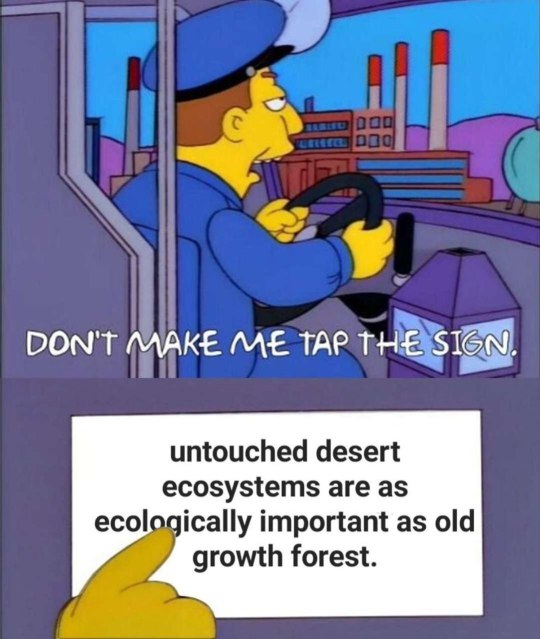
#deserts#desert#ecosystem#earth#ecology#econotego#golf course#golf equipment#golfers#mini golf#golf#ausgov#politas#auspol#tasgov#taspol#australia#fuck neoliberals#neoliberal capitalism#anthony albanese#albanese government#anti capitalism#capitalism#environmental activism#environmental#environment#enviroment art#environmetalists#enviromental#anti capitalist
85K notes
·
View notes
Text
#!!!!!#great white shark#sharks#shark pups#good news#environmentalism#science#environment#nature#animals#conservation#nyc#new york#new york city#usa#ocean life#marine life#sea life
30K notes
·
View notes
Text


My take on unicorns! I'd really love to make a mythical creature field guide someday, since the Spiderwick Field Guide is what inspired me to start drawing in the first place 🥰
#also I actually drew this in like. March lmao#I just kept telling myself I was gonna do a full painting of them in their natural environment and then I kept putting it off#until I realized I didn't actually wanna do that 😂 maybe someday if I get a chance to make that book then I'll do it#my art#unicorn#junicorn#speculative biology#unicorn art
25K notes
·
View notes
Text

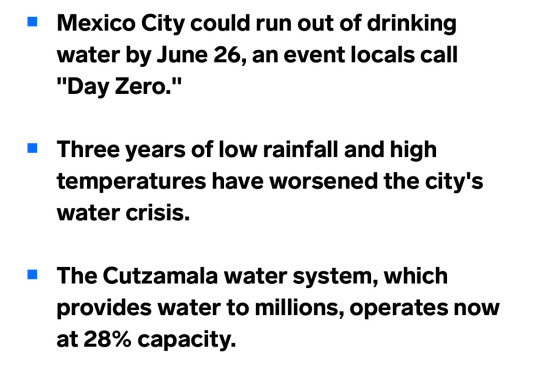
Source

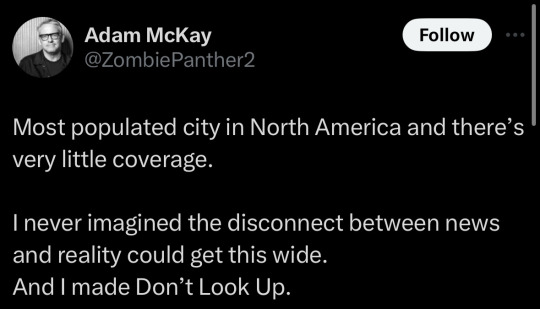
Source
#environment#Mexico#news#climate change#government#the left#progressive#twitter post#activism#current events#drought#environmentalism
27K notes
·
View notes
Text

"The Forest"
An illustration I painted and turned into an animated gif. This was very tedious but I like how it turned out.
#fantasy#mythical creatures#magical creatures#fantasy art#illustration#my art#artwork#art#artists on tumblr#digital art#drawing#animated gif#animation#digital artist#digital illustration#digital drawing#digital painting#forest#nature#trees#oc art#artist#ghost#dark art#aesthetic#enviroment art#environment
31K notes
·
View notes
Text

#funny#lol#haha#humor#meme#memes#goth#gothic#mental health#dank memes#dark humor#tweet#twitter#politics#us politics#environment
23K notes
·
View notes
Text
youtube
Watch the 2024 American Climate Leadership Awards for High School Students now: https://youtu.be/5C-bb9PoRLc
The recording is now available on ecoAmerica's YouTube channel for viewers to be inspired by student climate leaders! Join Aishah-Nyeta Brown & Jerome Foster II and be inspired by student climate leaders as we recognize the High School Student finalists. Watch now to find out which student received the $25,000 grand prize and top recognition!
#ACLA24#ACLA24HighSchoolStudents#youtube#youtube video#climate leaders#climate solutions#climate action#climate and environment#climate#climate change#climate and health#climate blog#climate justice#climate news#weather and climate#environmental news#environment#environmental awareness#environment and health#environmental#environmental issues#environmental education#environmental justice#environmental protection#environmental health#high school students#high school#youth#youth of america#school
24K notes
·
View notes
Text
Please tag/comment where you're from!
Submitted anonymously 🤫

11K notes
·
View notes
Text
Oh my god I'm sooooo mad right now
So. I have no business telling people not to collect wild plants/materials.
I do it all the time.
However.
The words "wildcrafted," and "foraged," even "sustainably harvested," are terrifying to see in an ad on Etsy or Instagram
There is a such thing as the honorable harvest where you ASK the plant if it is okay to take, with the intention of listening if the answer is NO. Robin Wall Kimmerer talked about this, She did not make it up, it is an ancient and basic guideline of treating the plants with respect.
Basically it is not wrong to use plants and other living things, even if this means taking their life. But you are not the main character. You have to reflect on your knowledge of the organism's life cycle and its role in the ecosystem, so you can know you are not damaging the ecosystem. You have to only take what you need and avoid depleting the population.
Mary Siisip Geniusz also talked about it in an enlightening way in her book Plants Have So Much to Give Us, All We Have To Do is Ask. She gave an example of a woman who was on an island and needed to use a medicinal herb to heal her injured leg or she would not survive the winter. In that situation she had to use up all of the plant that was on the island. This was permissible, even though it eliminated the local population, because she had to do it to save her life. But in return the woman had the responsibility to later return to the island and plant seeds of that plant.
And what makes me absolutely furious, is that there are a bunch of people online who have vaguely copied this philosophy of sustainability in a false and insulting way, saying "wildcrafted" or "foraged" materials to be all trendy and cool and in touch with nature, when it is actually just poaching.
If you are from a capitalistic culture the honorable harvest is very hard and unintuitive to learn to practice. I am not very good at it still. This is why it is suspicious if someone is confident that they can ethically and respectfully harvest wild materials with money involved.
So there's this lichen that is often called "reindeer moss." It looks like this:

It grows only a few millimeters a year.
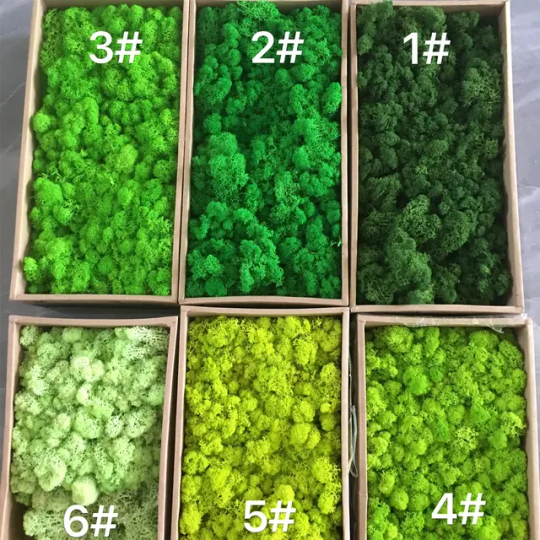
This is "preserved" reindeer moss.
It is from Etsy, similar is also sold in many other online shops, many of which have the audacity to describe it as a "plant" for decorations and terrariums that needs no maintenance.
It is not maintenance-free, it is dead. It has been spray-painted a horrible shade of green. The people buying it clearly don't even know what it is. It is a popular crafting material for "fairy houses," whatever the hell those are. So is moss, also dead, spray-painted, and wild-harvested. Supposedly reindeer moss is harvested sustainably in Finland, where it is abundant, for the craft industry. However poaching of lichens and mosses is absolutely rampant.
It's even more upsetting because there's hardly any articles drawing attention to the problem. This one is from 1999. And the poaching is still going on.
There is a "moss" section on Etsy, and it is so upsetting

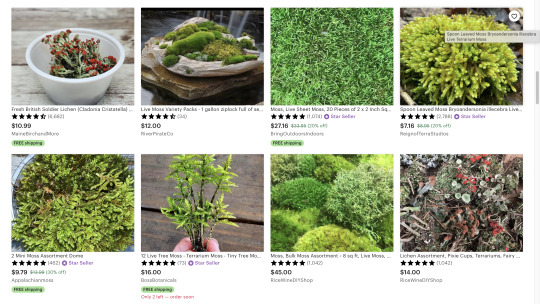
These mosses and lichens were collected from the wild. Most of the shops are in the Pacific Northwest or Appalachia, which are the major locations of moss and lichen poaching. There are some shops based in Appalachia selling "foraged" reindeer moss.
Reindeer moss may be abundant in Finland, but in Appalachia it should NOT be harvested to be sold on Etsy as craft supplies! Moss doesn't grow quickly. Big, healthy colonies like this took years to grow. Some of these shops have thousands of sales, all of bags and bags of moss and lichen, and thinking of how much moss and lichen that must be, I am filled with horror.
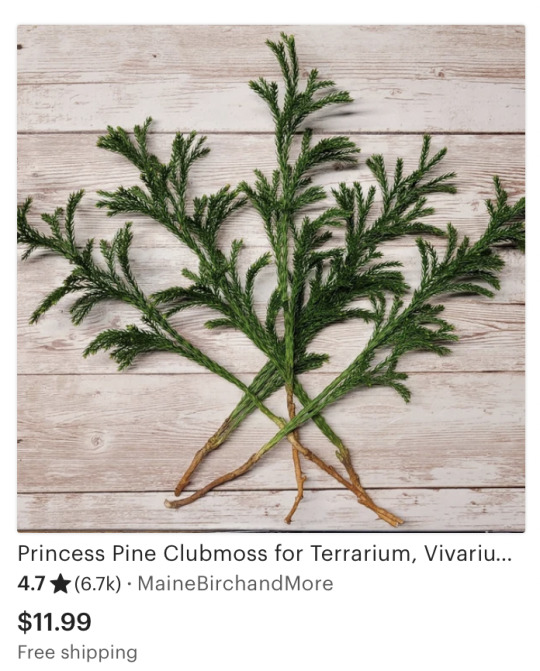
Clubmosses do not transplant well, and these ones have no roots. The buyers do not realize they have bought a dead plant because clubmoss stays green and pliable after it is dead.
This is especially awful because in Mary Siisip Geniusz's book she talked about clubmosses being poached so much for Christmas wreaths that they had almost disappeared from a lot of forests.
I don't even know if this is illegal if it's not a formally endangered species so I don't know if I can report them I'm just. really sad and angry
15K notes
·
View notes
Text
If you use arab.org like I do please consider taking the extra 30-60 seconds to click on ALL of their causes. Palestine is important but so are the environment, refugees, children, women, and the impoverished across the middle east and it doesn't take away from Palestine to click for multiple causes. The arab world faces a lot of problems and they only get worsened by how western nations have oppressed and attacked them. Clicking is small but it generates something and overtime it does benefit the greater good. It takes all of us clicking as often as possible but we can do it! It's really easy and safe and they have proofs on their site on how they do make an impact and are donating your click money
#arab.org#palestine#save palestine#free palestine#gaza#gaza strip#free gaza#save gaza#middle east#arab#please if you can't donate to causes use this site#its safe its free and anyone can use it#just turn off ur adblocker#for arab.org only#women's rights#save the children#help the poor#save the environment#help refugees#click to help
35K notes
·
View notes
Photo
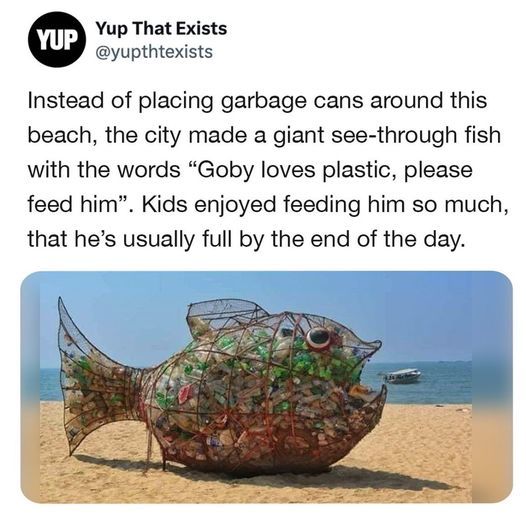
146K notes
·
View notes
Text
"With “green corridors” that mimic the natural forest, the Colombian city is driving down temperatures — and could become five degrees cooler over the next few decades.
In the face of a rapidly heating planet, the City of Eternal Spring — nicknamed so thanks to its year-round temperate climate — has found a way to keep its cool.
Previously, Medellín had undergone years of rapid urban expansion, which led to a severe urban heat island effect — raising temperatures in the city to significantly higher than in the surrounding suburban and rural areas. Roads and other concrete infrastructure absorb and maintain the sun’s heat for much longer than green infrastructure.
“Medellín grew at the expense of green spaces and vegetation,” says Pilar Vargas, a forest engineer working for City Hall. “We built and built and built. There wasn’t a lot of thought about the impact on the climate. It became obvious that had to change.”
Efforts began in 2016 under Medellín’s then mayor, Federico Gutiérrez (who, after completing one term in 2019, was re-elected at the end of 2023). The city launched a new approach to its urban development — one that focused on people and plants.
The $16.3 million initiative led to the creation of 30 Green Corridors along the city’s roads and waterways, improving or producing more than 70 hectares of green space, which includes 20 kilometers of shaded routes with cycle lanes and pedestrian paths.
These plant and tree-filled spaces — which connect all sorts of green areas such as the curb strips, squares, parks, vertical gardens, sidewalks, and even some of the seven hills that surround the city — produce fresh, cooling air in the face of urban heat. The corridors are also designed to mimic a natural forest with levels of low, medium and high plants, including native and tropical plants, bamboo grasses and palm trees.
Heat-trapping infrastructure like metro stations and bridges has also been greened as part of the project and government buildings have been adorned with green roofs and vertical gardens to beat the heat. The first of those was installed at Medellín’s City Hall, where nearly 100,000 plants and 12 species span the 1,810 square meter surface.
“It’s like urban acupuncture,” says Paula Zapata, advisor for Medellín at C40 Cities, a global network of about 100 of the world’s leading mayors. “The city is making these small interventions that together act to make a big impact.”
At the launch of the project, 120,000 individual plants and 12,500 trees were added to roads and parks across the city. By 2021, the figure had reached 2.5 million plants and 880,000 trees. Each has been carefully chosen to maximize their impact.
“The technical team thought a lot about the species used. They selected endemic ones that have a functional use,” explains Zapata.
The 72 species of plants and trees selected provide food for wildlife, help biodiversity to spread and fight air pollution. A study, for example, identified Mangifera indica as the best among six plant species found in Medellín at absorbing PM2.5 pollution — particulate matter that can cause asthma, bronchitis and heart disease — and surviving in polluted areas due to its “biochemical and biological mechanisms.”
And the urban planting continues to this day.
The groundwork is carried out by 150 citizen-gardeners like Pineda, who come from disadvantaged and minority backgrounds, with the support of 15 specialized forest engineers. Pineda is now the leader of a team of seven other gardeners who attend to corridors all across the city, shifting depending on the current priorities...
“I’m completely in favor of the corridors,” says [Victoria Perez, another citizen-gardener], who grew up in a poor suburb in the city of 2.5 million people. “It really improves the quality of life here.”
Wilmar Jesus, a 48-year-old Afro-Colombian farmer on his first day of the job, is pleased about the project’s possibilities for his own future. “I want to learn more and become better,” he says. “This gives me the opportunity to advance myself.”
The project’s wider impacts are like a breath of fresh air. Medellín’s temperatures fell by 2°C in the first three years of the program, and officials expect a further decrease of 4 to 5C over the next few decades, even taking into account climate change. In turn, City Hall says this will minimize the need for energy-intensive air conditioning...
In addition, the project has had a significant impact on air pollution. Between 2016 and 2019, the level of PM2.5 fell significantly, and in turn the city’s morbidity rate from acute respiratory infections decreased from 159.8 to 95.3 per 1,000 people [Note: That means the city's rate of people getting sick with lung/throat/respiratory infections.]
There’s also been a 34.6 percent rise in cycling in the city, likely due to the new bike paths built for the project, and biodiversity studies show that wildlife is coming back — one sample of five Green Corridors identified 30 different species of butterfly.
Other cities are already taking note. Bogotá and Barranquilla have adopted similar plans, among other Colombian cities, and last year São Paulo, Brazil, the largest city in South America, began expanding its corridors after launching them in 2022.
“For sure, Green Corridors could work in many other places,” says Zapata."
-via Reasons to Be Cheerful, March 4, 2024
#colombia#brazil#urban#urban landscape#urban planning#cities#civil engineering#green architecture#green spaces#urban heat#urban heat island effect#weather#meteorology#global warming#climate change#climate hope#climate optimism#climate emergency#climate action#environment#environmental news#city architecture#bicycling#native plants#biodiversity#good news#hope#solarpunk#ecopunk#hopepunk
16K notes
·
View notes
Text
Pair of Endangered Corpse Flowers Defy Odds to Bloom at Same Time–Now Bearing 700 Seeds https://www.goodnewsnetwork.org/pair-of-endangered-corpse-flowers-defy-odds-to-bloom-at-same-time-now-bearing-700-seeds/
35K notes
·
View notes